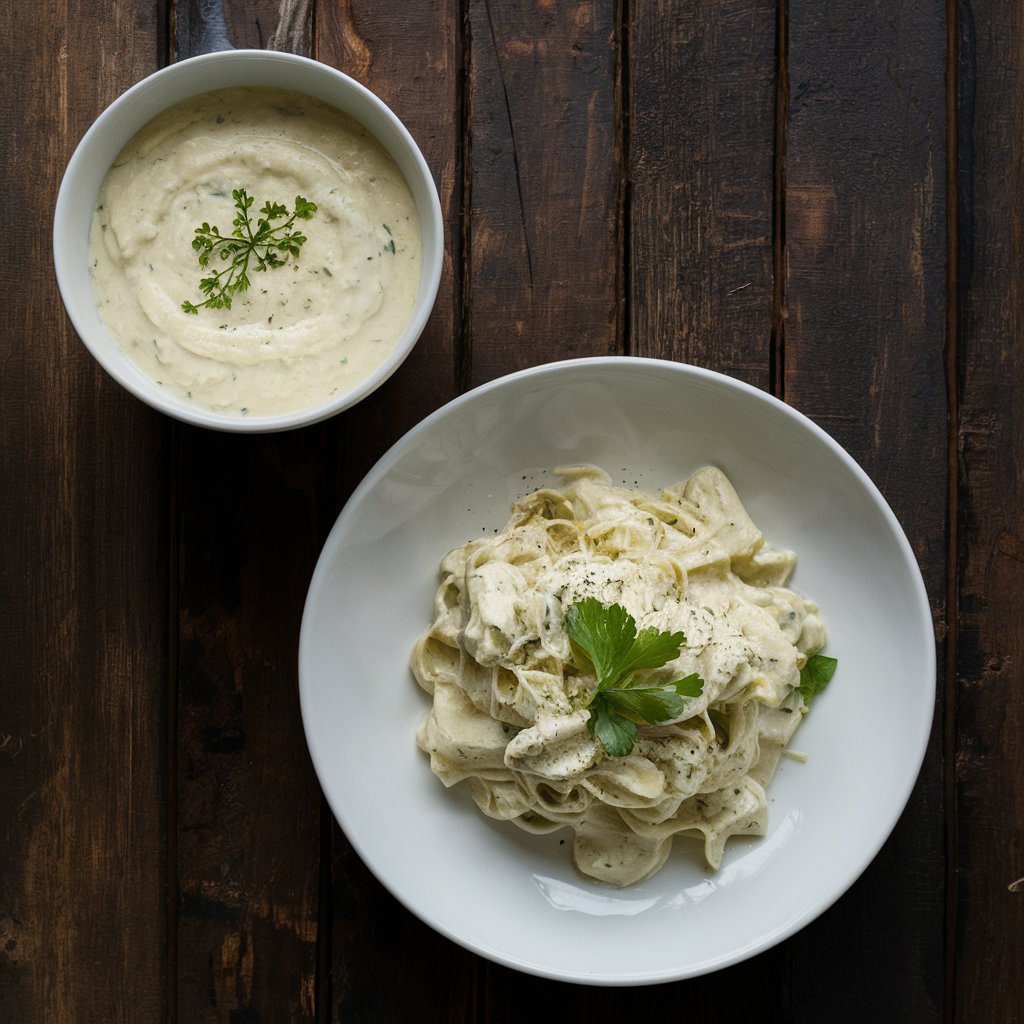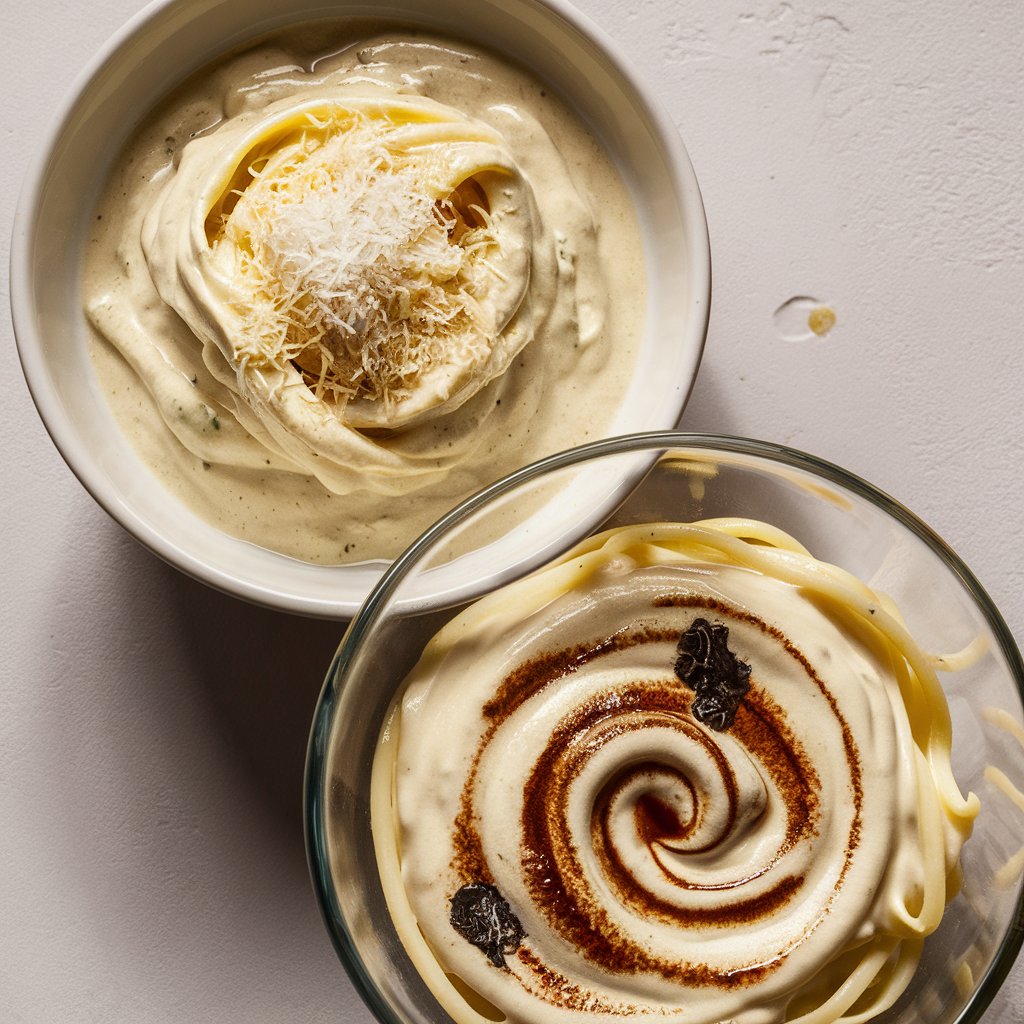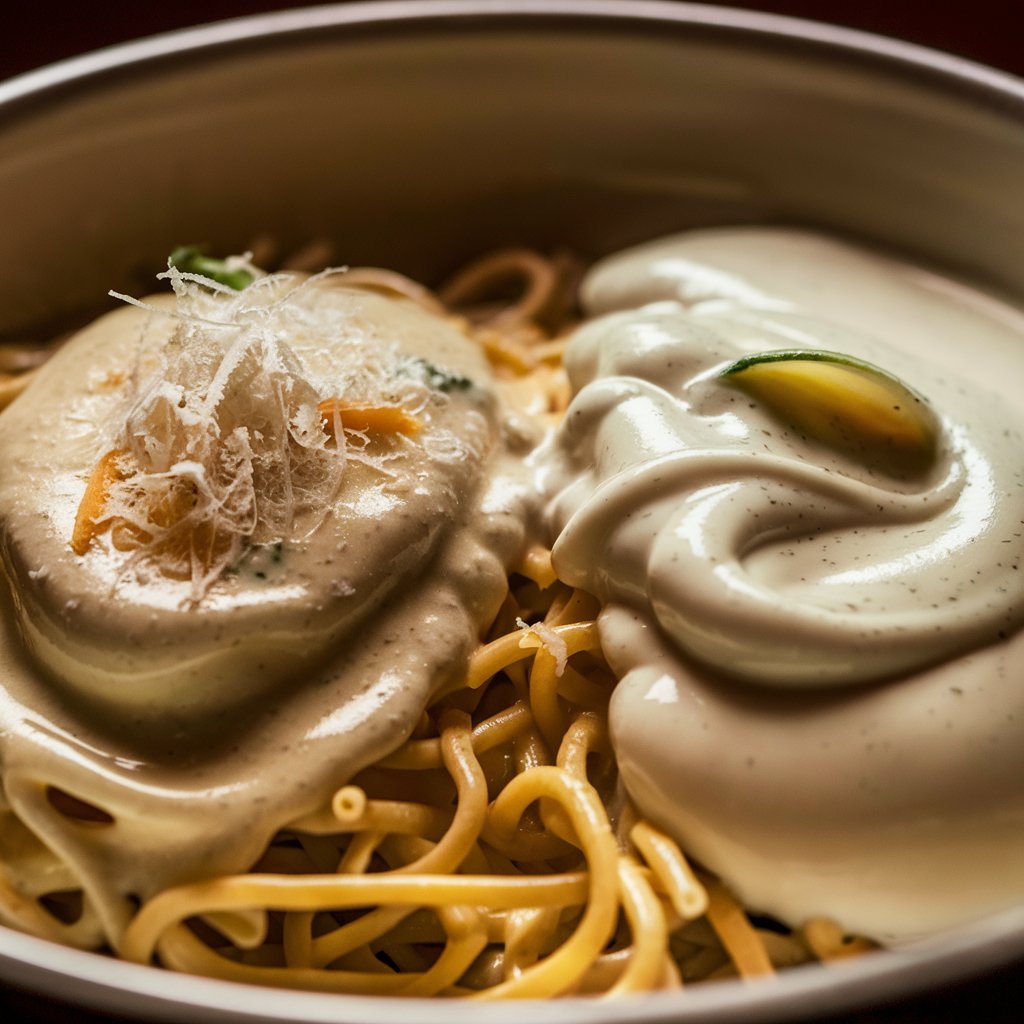
The world of culinary arts is filled with terms and recipes that can often be confusing, especially when it comes to sauces. Among these, two of the most commonly conflated sauces are white sauce and Alfredo sauce. While they may appear similar and share some ingredients, they are, in fact, distinct in both composition and application. But what truly sets these two sauces apart? And are there any circumstances where they could be considered the same? In this article, we will explore the origins, ingredients, and uses of both white sauce and Alfredo sauce, providing a detailed comparison that clarifies their differences and similarities.
To further understand these sauces, we will also introduce external resources and recipes, such as those found on Aleida Recipes, which offer a wide range of culinary insights and ideas.
1. The Origins of White Sauce and Alfredo Sauce
To appreciate the differences between white sauce and Alfredo sauce, it is essential to understand their origins.
- White Sauce (Béchamel Sauce): White sauce, also known as Béchamel sauce, is one of the mother sauces of French cuisine. It was first introduced in the 17th century and has since become a staple in various dishes across the world. The sauce is traditionally made with a roux of butter and flour, to which milk is gradually added, creating a smooth, creamy texture. White sauce is the foundation for many other sauces, including Mornay (which adds cheese to the mix).
- Alfredo Sauce: Alfredo sauce, on the other hand, has its roots in Italian-American cuisine. The sauce was created by Alfredo di Lelio, a restaurateur in Rome, in the early 20th century. It was originally made with just butter and Parmesan cheese, which were mixed with hot pasta to create a creamy, rich sauce. The American adaptation of Alfredo sauce often includes heavy cream, making it richer and more indulgent than the original.
2. The Ingredients: What’s Inside White Sauce and Alfredo Sauce?
The primary difference between white sauce and Alfredo sauce lies in their ingredients and preparation methods.
- White Sauce Ingredients:
- Butter: The base of the roux, which provides richness.
- Flour: Combined with butter to create the roux, which thickens the sauce.
- Milk: Gradually added to the roux to create a creamy, smooth sauce.
- Seasonings: Typically includes salt, pepper, and sometimes nutmeg for a subtle flavor.
- Alfredo Sauce Ingredients:
- Butter: Forms the base of the sauce, adding richness and creaminess.
- Parmesan Cheese: The key ingredient that gives Alfredo sauce its distinctive flavor.
- Heavy Cream (in American versions): Adds extra richness and a smooth, velvety texture.
- Garlic (optional): Some variations include garlic for added flavor.
The use of Parmesan cheese in Alfredo sauce is a significant distinction, as it imparts a nutty, savory flavor that is absent in white sauce.
3. Cooking Techniques and Applications
Understanding how these sauces are prepared and used can further highlight their differences.
- White Sauce (Béchamel Sauce):
- Preparation: The sauce begins with a roux made from equal parts butter and flour. Milk is then slowly whisked in, allowing the mixture to thicken. The sauce is cooked over low heat to prevent burning and to achieve a smooth texture.
- Applications: White sauce serves as a base for many dishes, such as lasagna, macaroni and cheese, and various casseroles. It is also the foundation for other sauces, like Mornay, and is often used in gratins and soufflés.
- Alfredo Sauce:
- Preparation: Traditional Alfredo sauce is made by melting butter in a pan, adding hot pasta, and then mixing in freshly grated Parmesan cheese until a creamy sauce forms. In American adaptations, heavy cream is added along with the butter and Parmesan, and the sauce is simmered until thickened.
- Applications: Alfredo sauce is most commonly used with pasta dishes, such as Fettuccine Alfredo. It is also used in casseroles, pizza toppings, and as a dipping sauce for breadsticks.
For detailed recipes and variations of these sauces, you can explore Aleida Recipes, which offers a variety of culinary insights.
4. Flavor Profiles: How Do They Compare?
The flavor profiles of white sauce and Alfredo sauce are distinctly different, largely due to the ingredients used.
- White Sauce (Béchamel Sauce): The flavor of white sauce is mild and slightly creamy, with a hint of nuttiness from the roux. It serves as a neutral base that can be adapted with additional ingredients like cheese, herbs, or spices. The simplicity of white sauce makes it versatile and suitable for a wide range of dishes.
- Alfredo Sauce: Alfredo sauce has a richer, more pronounced flavor, dominated by the savory notes of Parmesan cheese and the richness of butter (and cream in the American version). The addition of garlic, in some variations, adds a subtle depth to the flavor. This sauce is indulgent and luxurious, often creating a more decadent dining experience.
5. Nutritional Considerations: Health Implications
When comparing white sauce and Alfredo sauce, it’s also important to consider the nutritional differences.
- White Sauce (Béchamel Sauce):
- Calories: Lower in calories compared to Alfredo sauce, especially when made with low-fat milk.
- Fat Content: Contains less fat, particularly if made without butter or with a smaller quantity of it.
- Versatility: Can be adjusted to be lighter or richer depending on the dish.
- Alfredo Sauce:
- Calories: Higher in calories due to the inclusion of butter, Parmesan cheese, and heavy cream (in the American version).
- Fat Content: Higher in saturated fats, making it a richer and more indulgent option.
- Portion Control: Due to its richness, smaller portions may be more satisfying.
For those seeking a lighter option, white sauce may be preferable. However, for a richer, more indulgent dish, Alfredo sauce is the go-to choice.
6. Adaptations and Variations
Both white sauce and Alfredo sauce have numerous variations that cater to different tastes and dietary needs.
- White Sauce Variations:
- Mornay Sauce: Adds grated cheese (typically Gruyère or Parmesan) to the basic white sauce.
- Soubise Sauce: Incorporates onions that are cooked until soft and then blended into the sauce.
- Cream Sauce: An enriched version of white sauce with added cream for a richer texture.
- Alfredo Sauce Variations:
- Garlic Alfredo: Adds garlic to the sauce for an extra layer of flavor.
- Chicken Alfredo: Incorporates cooked chicken into the sauce, often served over pasta.
- Spinach Alfredo: Adds spinach for a nutritious twist, often found in pasta or pizza dishes.
These variations can be explored further through recipes available on culinary websites like Aleida Recipes, where you can find creative adaptations of both sauces.
7. Can White Sauce and Alfredo Sauce Be Used Interchangeably?
Given their differences, one might wonder if white sauce and Alfredo sauce can be used interchangeably in recipes. The answer depends on the dish and the desired outcome.
- In Pasta Dishes: While both sauces can be used with pasta, the end result will differ significantly. White sauce will create a milder, more delicate dish, while Alfredo sauce will produce a richer, more robust flavor.
- In Baked Dishes: White sauce is often used in baked dishes like lasagna or gratins because of its ability to bind ingredients together without overpowering them. Alfredo sauce, being richer, can be used in similar dishes but will create a more decadent result.
- As a Base for Other Sauces: White sauce is commonly used as a base for other sauces, allowing for a wide range of adaptations. Alfredo sauce, being more specific in flavor, is less versatile in this regard.
In summary, while there are some contexts where white sauce and Alfredo sauce might be used interchangeably, their distinct flavors and textures mean they are best suited to different culinary applications.
8. Popular Dishes Using White Sauce and Alfredo Sauce
To better understand the unique qualities of each sauce, it’s helpful to explore some popular dishes that feature white sauce and Alfredo sauce.
- Dishes with White Sauce (Béchamel):
- Lasagna: A classic Italian dish where white sauce is layered with pasta, meat, and cheese.
- Moussaka: A Greek dish with layers of eggplant, ground meat, and white sauce.
- Macaroni and Cheese: A comfort food favorite where white sauce is the base for the cheese sauce.
- Dishes with Alfredo Sauce:
- Fettuccine Alfredo: The most famous dish featuring Alfredo sauce, made with fettuccine pasta.
- Chicken Alfredo: A popular variation where cooked chicken is mixed with Alfredo sauce and pasta.
- Alfredo Pizza: A pizza variation that uses Alfredo sauce instead of tomato sauce, often topped with chicken, spinach, or other ingredients.
For those interested in trying out these dishes, recipes can be found on websites like Aleida Recipes, which provide detailed instructions and tips.
9. The Culinary Debate: Which is Better?
The debate over whether white sauce or Alfredo sauce is better ultimately comes down to personal preference and the dish being prepared. Each sauce has its own strengths:
- White sauce is versatile, adaptable, and provides a neutral base that can be enhanced with various ingredients.
- Alfredo sauce is rich, indulgent, and offers a bold flavor that can elevate simple dishes into something extraordinary.
Some chefs and home cooks prefer white sauce for its ability to blend seamlessly into dishes, while others favor Alfredo sauce for its luxurious, creamy texture and flavor.
10. Conclusion: Understanding the Differences
In conclusion, while white sauce and Alfredo sauce may share some similarities, they are distinct in their origins, ingredients, preparation, and applications. White sauce, or Béchamel sauce, is a fundamental part of French cuisine, known for its simplicity and versatility. Alfredo sauce, on the other hand, is a richer, more decadent sauce with Italian-American roots, beloved for its creamy texture and savory flavor.
Whether you prefer the mild and adaptable nature of white sauce or the indulgent richness of Alfredo sauce, both sauces have a place in the culinary world. By understanding their differences, you can make more informed decisions in the kitchen and create dishes that highlight the unique qualities of each sauce.
For more insights into these and other culinary topics, including detailed recipes and variations, visit Aleida Recipes, where you’ll find a wealth of information to elevate your cooking experience.
Keyphrase Usage:
To increase the keyphrase density in the article, consider incorporating the focus keyphrase White sauce vs Alfredo sauce at strategic points, such as:
- Introduction: “When comparing White sauce vs Alfredo sauce, it’s important to understand their unique origins and ingredients.”
- Body paragraphs: “In the debate of White sauce vs Alfredo sauce, the ingredients and preparation methods are crucial.”
- Conclusion: “Ultimately, the choice between White sauce vs Alfredo sauce comes down to personal preference and the dish being prepared.”





